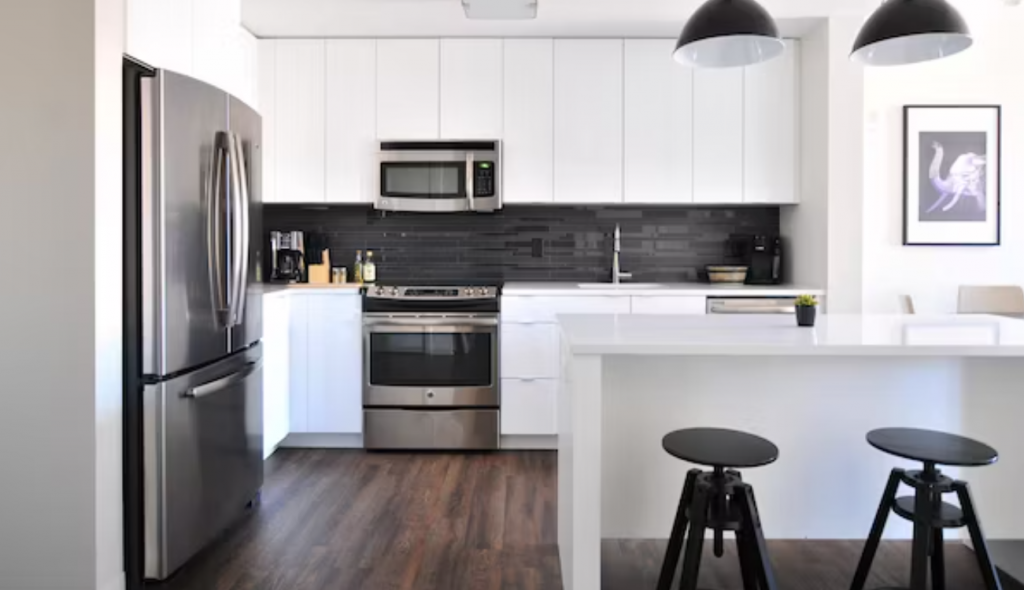Ultimate Home Automation: Gadgets to Make Life Effortless
6 min read
Home automation, once a futuristic concept, is now a tangible reality that is rapidly transforming the way we live. The integration of smart technology into our homes has resulted in unprecedented levels of convenience, efficiency, and security. From thermostats that optimize indoor comfort to lighting systems that set the perfect ambiance, smart gadgets have made the dream of an effortless home a reality.
The Smart Thermostat: Optimizing Comfort and Energy Efficiency
Smart thermostats have emerged as the cornerstone of home automation, delivering personalized comfort while reducing energy consumption. These intelligent devices use sensors to analyze temperature patterns and adapt heating and cooling systems accordingly. With features like remote access through smartphones and learning algorithms, they can create energy-saving schedules based on household patterns.
Leading brands like Nest, Ecobee, and Honeywell offer smart thermostats with diverse features. The Nest Learning Thermostat, for example, employs machine learning to understand user preferences and efficiently manage indoor climate control. The Ecobee SmartThermostat boasts built-in Alexa and an intuitive touchscreen for seamless control.
Smart Lighting: Enhancing Ambiance and Convenience
Gone are the days of traditional light switches; smart lighting systems have taken over, enabling users to customize their home’s lighting with ease. Smart bulbs and switches offer various color options and dimming capabilities to create the desired ambiance for any occasion.
Compatibility with voice assistants like Amazon Echo and Google Home allows for effortless voice control, making it convenient to adjust lights without lifting a finger. Beyond convenience, smart lighting solutions are energy-efficient, enabling users to reduce electricity consumption and lower their utility bills.
Intelligent Home Security: Protecting Your Loved Ones
Home automation has redefined home security, making it smarter and more accessible. Smart cameras provide real-time surveillance, allowing homeowners to monitor their property remotely through mobile apps. They come equipped with features like motion detection, night vision, and two-way communication, providing peace of mind and enhancing security.
Smart locks offer enhanced access control, allowing users to lock and unlock doors remotely. Additionally, some models offer temporary access codes for guests or service providers, eliminating the need for physical keys.
Automated Home Entertainment: Elevating Leisure Time
Entertainment has also undergone a transformation with home automation. Smart TVs offer high-resolution displays, smart app integration, and voice control for a seamless viewing experience. By connecting streaming devices like Roku or Apple TV, users can access their favorite content effortlessly.
Moreover, smart speakers, such as the Amazon Echo and Google Nest Audio, have become central hubs for audio entertainment. They offer not only music playback but also the ability to control other smart devices in the home through voice commands.
Efficient Home Appliances: Simplifying Household Chores
Smart home appliances have made daily chores more manageable and efficient. Smart refrigerators are equipped with cameras that allow users to view the contents without opening the door, reducing energy waste. They can also create shopping lists and track expiration dates.
Wi-Fi-enabled washing machines and dryers provide remote control and monitoring, ensuring laundry tasks can be scheduled even when away from home. Robotic vacuum cleaners autonomously navigate through rooms, keeping floors clean without any manual effort.
Home Automation Hubs: The Central Nervous System
As the number of smart devices increases in a home, managing them becomes a challenge. This is where home automation hubs come into play, acting as the central nervous system of the smart home. These hubs consolidate the control of various devices into a single platform, making it easier for users to manage their smart ecosystem.
Leading home automation hubs like Samsung SmartThings and Apple HomeKit offer seamless integration with numerous smart devices, creating a unified experience for users. With a central hub, users can control their lights, security cameras, thermostats, and more through a single app or voice commands.
Smart Home Security Concerns: Addressing Privacy and Vulnerabilities
While home automation offers numerous benefits, it also raises concerns about privacy and security. With an increasing number of connected devices, there is a potential risk of unauthorized access and data breaches. To address these concerns, users must prioritize security when selecting smart devices.
Choosing reputable brands with a track record of secure products is essential. Regularly updating firmware and using strong passwords can further enhance the security of smart devices. Additionally, setting up a separate network for smart home devices can isolate them from personal and sensitive data.
Creating a Customized Smart Home Ecosystem
Building a smart home ecosystem tailored to individual needs requires careful planning and consideration. Homeowners must assess their requirements and preferences before selecting devices. Understanding the compatibility of devices and their integration capabilities is crucial to creating a seamless experience.
Users can create automation routines, such as “good night” or “away” modes, which trigger specific actions across multiple devices simultaneously. This customization empowers homeowners to design a smart home that caters precisely to their lifestyle and preferences.
The Future of Home Automation: Innovations and Trends
The journey of home automation has only just begun, with an exciting future filled with innovations and possibilities. Artificial Intelligence (AI) and machine learning will play a significant role in enhancing the capabilities of smart devices, making them more intuitive and proactive.
Predictive analysis will enable devices to anticipate user needs and act accordingly, making the smart home ecosystem even more seamless. Additionally, integration with smart grids and renewable energy sources will promote energy efficiency and sustainable living.
Eco-Friendly Home Automation: Sustainable Living Solutions
As environmental concerns become more pressing, home automation can contribute to sustainable living practices. Smart gadgets offer features like energy monitoring, allowing users to track and manage energy consumption effectively. By optimizing energy use, homeowners can reduce their carbon footprint and contribute to a greener future.
Furthermore, smart irrigation systems and weather-based sprinkler controllers ensure that water usage for gardening is efficient and eco-friendly. These small steps collectively make a significant impact on the environment.
Home Automation for Accessibility: Empowering People with Disabilities
Home automation technology has the potential to improve accessibility for individuals with disabilities. Smart home solutions, such as voice-controlled devices and remote control capabilities, empower people with mobility challenges to interact with their environment effortlessly.
For visually impaired individuals, voice assistants provide valuable assistance in daily tasks and information retrieval. Automated lighting and climate control can also enhance the comfort and accessibility of living spaces for those with specific needs.
The Cost of Ultimate Home Automation: Value vs. Investment
Embracing home automation comes with an initial investment, but the long-term benefits make it a valuable proposition. The convenience, energy savings, and improved security contribute to an enhanced quality of life.
Users can start with essential smart devices and gradually expand their ecosystem as needed. By choosing reliable devices and creating a well-thought-out automation plan, the value of home automation quickly outweighs the upfront costs.

Challenges and Limitations of Home Automation
Despite the promising benefits, home automation faces certain challenges and limitations. Interoperability issues among smart devices from different manufacturers can complicate integration and automation.
Moreover, network connectivity problems can affect the responsiveness of smart devices. Manufacturers continually address these challenges through software updates and improved hardware.
Conclusion
Home automation has revolutionized the way we interact with our living spaces, offering unparalleled convenience, security, and energy efficiency. Smart thermostats, lighting systems, security devices, and home appliances collectively create a seamless, effortless lifestyle for homeowners.
As technology continues to evolve, the future of home automation holds even greater potential for innovations that will further elevate our daily lives. Embracing the power of smart technology allows individuals to transform their houses into ultimate smart homes.
With the promise of a more accessible and sustainable future, smart homes are set to play an integral role in shaping our living experiences for years to come.
FAQs
1. Are smart home devices compatible with each other? – While many smart devices are designed to be compatible with one another, not all products work seamlessly together. It’s essential to check compatibility and consider using a central home automation hub for better integration.
2. Can home automation reduce energy consumption? – Yes, home automation can significantly reduce energy consumption. Smart thermostats, lighting systems, and appliances are designed to be energy-efficient and help users manage energy usage effectively.
3. Are smart homes more vulnerable to hacking? – Smart homes can be vulnerable to hacking if proper security measures are not taken. Using strong passwords, keeping firmware updated, and using reputable brands can mitigate the risks.
4. Can home automation help people with disabilities? – Yes, home automation can greatly benefit people with disabilities. Voice-controlled devices, remote control features, and smart home technologies can enhance accessibility and independence.
5. How can I start building a smart home ecosystem? – Begin by identifying your needs and preferences. Start with essential smart devices like a smart thermostat or smart lighting and gradually expand your setup based on your requirements and budget. Consider a home automation hub for better integration.






